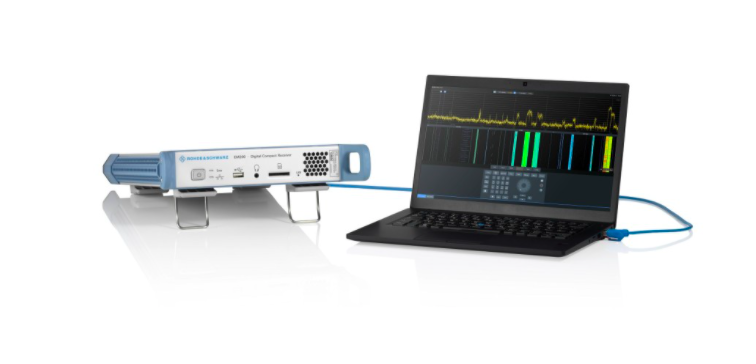EXFO saw its sales drop 10% year-over-year, but the financial impact of the global coronavirus pandemic was blunted in part by cost-cutting and a Canadian government program for wage subsidies.
“Despite constraints and restrictive measures in many countries, EXFO navigated through the coronavirus pandemic with a solid financial performance in the third quarter of 2020,” said EXFO’s CEO Philippe Morin in a statement on the results. “We delivered encouraging sales in a difficult environment and proactively implemented cost-controls, while benefiting from a Canadian government wage subsidy program. The end-result was strong earnings amid end-markets that will necessarily improve as long-term drivers like fiber and 5G deployments remain intact.”
The company’s net earnings for the quarter were up substantially from the $21,000 that it earned in the year-ago quarter, to $3.2 million. EXFO said that its net earnings included $3.3 million ($2.4 million after-tax) from a Canada emergency wage subsidy program to help qualifying businesses alleviate the effects of the coronavirus pandemic.
Sales fell 10.1% year-over-year to $66.1 million in the third quarter of EXFO’s fiscal 2020, mainly due to the ongoing impact of the pandemic, the company said. Test and measurement sales accounted for 75% of the company’s revenues, while service assurance, systems and services made up 25% of revenues. EXFO earned 45% of its revenues in the Americas, 33% in Europe, the Middle East and Africa, and 22% in the Asia-Pacific region.
In other test news:
–Keysight Technologies said that test lab network SGS will use Keysight’s 5G conformance and carrier acceptance test solutions for its Americas wireless operations, for testing devices using Keysight’s 5G NR emulation capabilities.
In related news, the company recently introduced a new 5G device over-the-air testing solution for multiple-input multiple-output (MIMO) and massive MIMO. Keysight said its S8708A Advanced Performance Test Toolset enables 5G device vendors to validate device performance under “accurate and real-world conditions” by using 3D fading and mobility scenarios. The new solution relies on Keysight’s Propsim FS16 or F64 channel emulator and its UXM 5G Wireless Test Platform, combined with 3D over-the-air multiprobe anechoic chambers. Keysight said that the setup supports test cases specified by 3GPP for MIMO OTA testing in study item (TR38.827) — which Keysight contributed to.
“Adding advanced performance test capabilities to Keysight’s network and channel emulation solutions enables an ecosystem investing in MIMO and massive MIMO technology to accelerate the launch of high performing 4G and 5G devices,” said Kailash Narayanan, VP of Keysight and GM of Keysight’s wireless test group. “Keysight’s system solution, which includes 3D multiprobe anechoic chambers, provides for 5G device performance optimization across the full protocol stack in a frequency range 2 (FR2) OTA test environment.”
–Tektronix is supporting the rapid shift of a factory in Indiana from producing electronics to producing ventilators to be used to treat COVID-19 patients. Tek said that it is working with accreditation body American Association for Laboratory Accreditation (A2LA) to “rapidly convert and accredit Tektronix for the calibration of tools” that will be used in the ventilator production setup of a plant in Kokomo, Indiana that will produce ventilators for Ventec Life Systems. Tektronix said that it is managing the torque screwdriver tools involved in ventilator production.
“Tektronix is committed to the rapid production of these critical machines,” said Ken Coughran, VP of sales for U.S. multi vendor service at Tektronix. “The work of test and measurement must be accurate and precise to ensure the components of these machines are faultless in order to rely on these life-saving instruments.”
–Ookla‘s recent testing showed national median download speeds are up, T-Mobile US’ 5G covers the most geographic area but Verizon’s 5G is fastest, and more. Read the full story here.
-Test equipment rental company Eletro Rent and Rohde & Schwarz are touting a closer collaboration in Europe to navigate the new cost-conscious environment as a result of economic fallout from the global pandemic. R&S named Electro Rent a “preferred partner” in the region for equipment rentals, and Electro Rent will expand its inventory of R&S equipment available for rent.
“Organisations throughout Europe are navigating a challenging economic time. By partnering with Rohde & Schwarz we are able to combine their technical innovation with our expertise and experience in providing alternative, OpEx-driven financial solutions to access vital test equipment,” said Peter Collingwood, CEO of Electro Rent Europe. “Through increased investment in Rohde & Schwarz inventory and close collaboration of our teams throughout Europe, we are in a fantastic position to continue to support our customers as they plan and execute their future test and measurement requirements.”
Patricio Duenas, GM for Sales in Germany at Rohde & Schwarz, said that the partnership with Electro REnt “gives Rohde & Schwarz customers the flexibility they need to secure the right high-end test solutions in a CapEx conscious environment.”
Rohde also recently released a new, compact digital receiver for spectrum monitoring and direction-finding.

The R&S EM200 detects, analyzes and demodulates signals in the range of 8 kHz to 8 GHz and has an option for direction-finding with R&S antennas in the range from 20 MHz to 6 GHz.
–Viavi Solutions published its 13th annual State of the Network report this week, and a combination of pandemic-driven usage shifts, emerging technologies and cybersecurity threats are driving the need for more network visibility. Read more here.
–Anritsu recently launched a new family of connectors, its Extended-K family, with performance up to 43.5 GHz for high-frequency applications including 5G backhaul, millimeter-wave body scanners and aerospace/defense uses. The company noted that the connectors “maintain their high reliability and robustness in harsh environments and “remove needless costs associated with migrating from 2.92 mm to more expensive high-frequency connectors when operation past 43.5 GHz is not warranted.”

